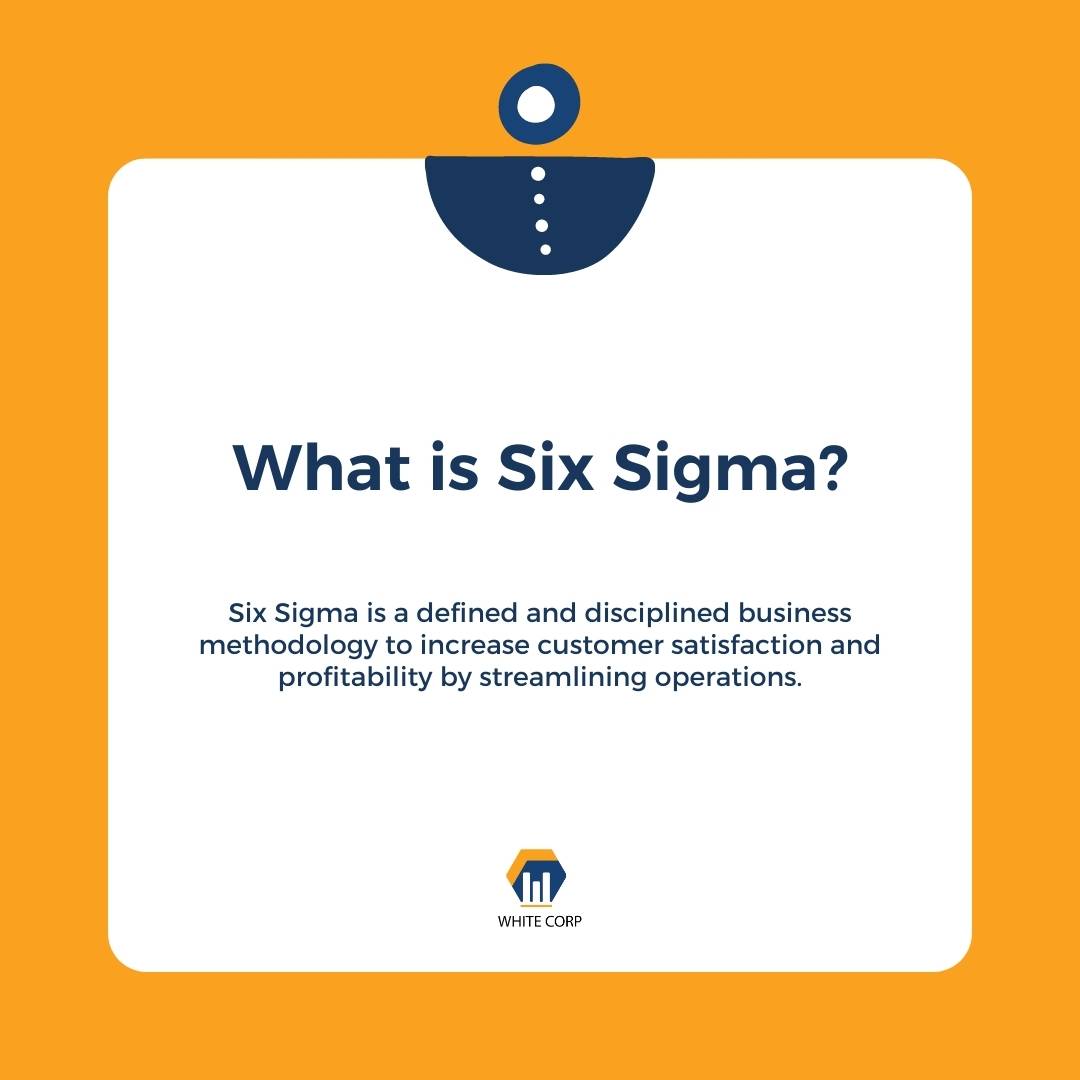Six Sigma
is a defined and disciplined business methodology to increase customer satisfaction and profitability by streamlining operations, improving quality, and eliminating defects in every organization-wide process.
A Business Strategy:
Using Six Sigma Methodology, a business can strategize its plan of action and drive revenue increase, cost reduction, and process improvements in all parts of the organization
Vision:
Six Sigma Methodology helps the Senior Management create a vision to provide a defect-free, positive environment to the organization.
· A Benchmark:
Six Sigma Methodology helps in improving process metrics. Once the improved process metrics achieve stability, we can use the Six Sigma methodology again to improve the newly stabilized process metrics. For example, The Cycle Time of Pizza Delivery is improved from 60 minutes to 45 minutes in the Pizza Delivery process by using the Six Sigma methodology. Once the Pizza Delivery process stabilizes at 45 minutes, we could carry out another Six Sigma project to improve its cycle time from 45 minutes to 30 minutes. Thus, it is a benchmark
· A Goal:
Using the Six Sigma methodology, organizations can keep a stringent goal for themselves and work towards achieving them during the course of the year. The right use of the methodology often leads these organizations to achieve these goals.
· A Statistical Measure:
Six Sigma is a data-driven methodology. Statistical Analysis is used to identify the root causes of the problem. Additionally, the Six Sigma methodology calculates the process performance using its own unit known as the Sigma unit.
· A Robust Methodology:
Six Sigma is the only methodology available in the market today, which is a documented methodology for problem-solving. If used in the right manner, Six Sigma improvements are bullet-proof, and they give high-yielding returns.
· What is Quality? :
Different individuals and organizations have given different definitions for Quality. Let's study some of those definitions:
· Deming:
"Quality is defined from the customer's point of view as anything that enhances their satisfaction."
· Juran:
"Fitness for use. Those product features which meet the needs of customers and thereby provide product satisfaction. Freedom From deficiencies".
· ASQC:
"The totality of features and characteristics of a product or service that bear on its ability to satisfy stated or implied needs."
· COPC:
"Quality is defined as knowledge of agents that would enable them to provide an accurate and consistent solution to the customer at the very first attempt."
· ISO:
"Degree to which a set of inherent characteristics, a product or service, fulfill requirements."Simply stated, quality comes from meeting customer expectations. This occurs as a result of four activities:
§ Understanding customer requirements.
§ Designing products and services that satisfy those requirements.
§ Developing processes that are capable of producing those products and services.
§ Controlling and managing those processes so they consistently deliver to their capabilities.
What is the Hidden Factory?
The Hidden Factory:
is the set of activities (or activities) in the process that result in a reduction of quality or efficiency of a business process or manufacturing department and is not known to managers or others seeking to improve the process. Six Sigma focuses on identifying "hidden factory" activities to eliminate the root causes. One of the examples of Hidden Factory will be creating multiple versions of a status update presentation by the Project Management team because all of the requested information was not received by the due date from all the departments. Six Sigma works effectively to identify the hidden factory situations, question the status quo, and remove it, andthus it improves business profits and reduces waste.
.png)
